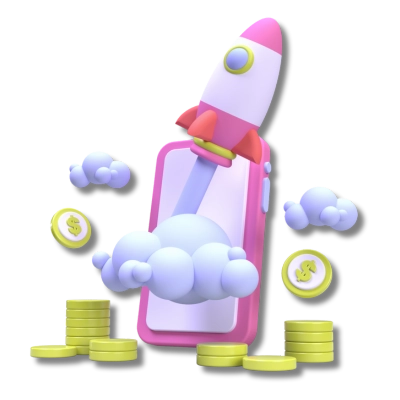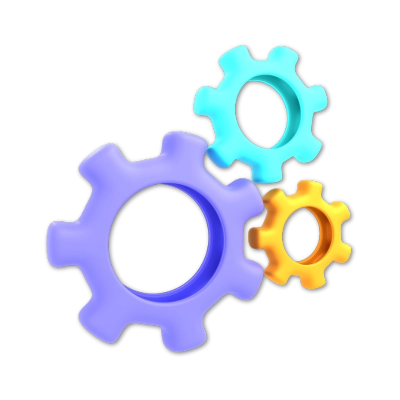How Casino Apps Are Developed and Maintained

In the past few years, the chatter and usage around and of casino apps have literally skyrocketed, not only grabbing the time and attention of experienced gamblers but curious first-timers as well. Why has the buzz around these platforms rocketed into the stratosphere? Easy! The surge is fueled by the convenience of having a casino—yes, an entire casino where you can play any game your lil betting heart desires—in your hand. What was once unimaginable is now possible! Players can now gamble anytime, anywhere.
We love the accessibility and convenience for all, but have you ever wondered what goes into making this happen? We do! Because underneath all of the sleek interfaces and the spinning reels of their slot machines, these apps are an insanely intricate version of modern software development. Developing and maintaining these beloved casino apps involves a whole lot of technical challenges—not to mention the regulatory requirements!
We wanted to take a look inside the world at how this all comes to fruition so you can play poker on your smartphone; how do they do it? What exactly is involved in the development, and how are these super-sophisticated casino apps maintained? Whether you’re a player, a developer, or just curious about how it all comes together, come with us as we find out all that it entails!
The Development Process
Turning a virtual vision into a virtual casino involves a dynamic and meticulous development process. Every single step, from ideation to execution, is critical in building an app that not only entertains the players but also keeps them coming back again and again! How do they start their engines? Read on below to find out what the first stages are.
1- Idea and Conceptualization
The beginnings of a new casino app usually start out with a little spark—an idea. But actually, transforming this idea into a viable product requires a ton of legwork, an understanding of the current market, and a lot of strategic planning.
Developers begin with extensive market research to analyze all current trends, technological advancements, and how competitive the landscape is. They also sniff around and gather up intel of player feedback on existing apps, taking note of what users like and what they don’t like.
This initial stage is one of the most important in terms of crafting the casino app’s features with present user expectations and identifying a unique selling proposition (USP) that makes the app stand out from its competitors. Whether it’s a novel game mechanic, a thematic twist, or a great loyalty program, the goal is to build an app that appeals to the target audience they want to bring in.

2- Design Phase
Once the groundwork of ideation is laid, the focus changes to designing the app, where UI/UX (user interface/user experience) comes into play. The design phase is not solely about aesthetic appeal; it’s about creating an engaging and seamless experience for users. An intuitive and attractive interface is a must! Not only because it brings gamblers in but it also keeps them playing for longer periods of time.
Designers and developers work collaboratively to make sure that every single aspect of the app, from the layout of the game selection menu to the feedback sounds from games, amplifies the overall user experience.
Special attention is given to usability aspects like:
- The ease of navigation
- The responsiveness of the interface
- The simplicity and clearness of in-app instructions.
This phase usually involves a few different iterations, with continuous testing and refinement to guarantee that the app is not only functional but also fun for players.
3- Software Development
After the design phase is set, the actual building of a casino app begins. This stage involves selecting the right technology stack and tools to bring the visual and functional elements of the app to life. What happens in the software development process? From platform selection to the integration of payment systems, here’s where it starts to take a more defined shape!
Choosing the Platform
The decision on which platforms to develop for—iOS, Android, or web—is a strategic choice that impacts everything from the app’s reach to its maintenance. A majority of the time, developers go for a cross-platform approach so they can snag the biggest audience across different devices. Android and iOS platforms obviously dominate the mobile market, but each has its own set of development guidelines and user demographics.
Android apps can reach a broader audience globally, but the platform’s fragmentation poses a few development challenges. iOS, on the other hand, provides a much more uniform ecosystem, which can simplify development but comes with stricter app submission guidelines. Web-based platforms are also popular for their accessibility on various devices without the need for downloads, although they might offer a slightly reduced user experience compared to dedicated mobile apps.
Programming Languages and Tools
The choice of programming languages and tools is a pivotal step in molding the app’s capabilities and performance. For iOS, Swift and Objective-C are the primary choices, and they are known for their strength and Apple’s comprehensive support. Android developers usually lean towards Java and Kotlin due to their flexibility and integration with Android’s native features.
Besides these, HTML5, CSS3, and JavaScript are all must-haves for web-based applications for the versatility that is needed to run on any standard web browser. Developers also utilize various frameworks and libraries, like React Native or Flutter, to streamline the development of cross-platform apps so the apps are consistent and efficient.
Game Development Engines
For the actual game development within casino apps, engines like Unity and Unreal Engine are frequently chosen. These engines support intricate graphical needs and strong gameplay mechanics, which are essential for creating engaging casino games. Unity has an extensive range of tools and a vast asset store, making it easier to develop visually appealing and complex games. Unreal Engine is known for its high-fidelity graphics and powerful performance, which is ideal for the more graphically intense casino games.
Integration of Payment Systems
Now, for the piece de resistance component of casino app development, the integration of secure payment systems is needed. This involves not only embedding various payment gateways but also certifying compliance with regulations like PCI DSS to protect users’ financial data.
Developers must implement the strongest encryption methods and secure authentication protocols to safeguard transactions. Popular payment gateways like PayPal, Stripe, and local banking APIs are commonly integrated, giving users multiple payment options to deposit and withdraw funds safely and conveniently.
Testing and Quality Assurance
The developers have completed the heavy lifting part, but they are far from done—now comes the really hard work of testing and quality assurance. If developers want people to play on their casino app, not only does it have to look good, but it has to work—and work well! Here’s how developers polish and prep an app for launch with extensive and exhaustive testing.
1- Functionality Testing
Functionality testing is the backbone of QA processes. Here, developers check under the hood to make sure that every feature works exactly as it’s intended to run. This includes testing game mechanics, user interactions, and transaction processes to spot and fix any glitches. It’s about making sure that when a player presses a button or makes a bet, the app responds correctly every single time.

2- Performance Testing
Absolutely no one likes a slow, glitchy, or laggy app, especially when there is real money involved—the stakes are pretty high! Performance testing makes sure that the app runs smoothly, even under stress. This could mean simulating thousands of users accessing the app simultaneously to see if it can handle heavy traffic without crashing or slowing down. Developers also check how the app performs on different devices and operating systems for a consistent experience for all users, no matter where they choose to play.
3- Security Testing
Security is no joke when it comes to online gambling—it is non-negotiable, so the security testing phase is a rigorous one, as it has to encompass all areas like user protection, secure transactions, and fraud prevention. Developers employ a variety of techniques, like penetration testing and vulnerability scans, to see if there are any potential security weaknesses.
The goal is to guarantee that user data is rock-solid and secure and that the app complies with legal standards like GDPR or other regional regulations. Potential users of a casino app need to know their sensitive info is safe when they choose to play on a platform.
4- User Acceptance Testing
The previous steps all sound hard, but this one might be the most difficult—user acceptance testing (UAT). Developers have to hand over their baby to real users to see if it makes the cut! This means people will try out the app before it goes live—if they don’t like it, then it’s back to the drawing board (or at least given some tweaks).
This phase gathers first-hand feedback from beta testers who provide valuable info that developers might not have considered or missed altogether.
They’ll see how real players interact with the app, pick up on any confusing elements, and get a sense of overall user satisfaction. This feedback is priceless, as it does yeoman’s work for developers to fine-tune the app, making any final adjustments so it’s not only functional and fast but also fun and user-friendly.
All of these testing stages ensure that by the time a casino app hits the market, it’s polished to a high shine, super secure, and ready to deliver a high-quality casino gaming experience!
Launch and Initial Feedback
The casino app is ready to be launched, and this is a pretty major milestone—it’s when all the hard work of developers finally debuts in the real world. They’ll want their platform to make its mark in an already crowded market, and here’s how they try to accomplish it!
1- Deployment Strategy
When it’s finally time to launch, a thoughtful and careful approach really does pay off. That’s why a lot of developers choose to start off with a soft launch, which means releasing the app in a few select areas before it goes global. This lets them see how the casino app performs in the wild, fix any unexpected issues, and get a general feel for what players think of it. It’s kind of like a dress rehearsal before a big opening night—it’s a way to make certain that everything is just right.

2- Marketing and Promotion
Getting the word out about a new casino app is no small feat, and it has to be done—how will people play on it if they don’t know it exists? That’s where some marketing magic and promotion enter the picture. Way before the launch, people behind the scenes are working on building a buzz in the gambling world. Think social media campaigns, partnerships with celebs or well-known people in the gambling world, or targeted ads popping up on your IG feed, all to get your attention.
The ultimate goal is to get potential players hyped up so that they are hitting that download button the moment the app goes live. And the push doesn’t end with the casino app launch; there are continued promotions and updates in an effort to keep the app on players’ radars and to attract new users.
3- Collecting Initial User Feedback
Once the app is out and players are using it, getting their thoughts—like the first comments and reviews—can make all the difference. These will highlight any unexpected issues or suggest new features—things that weren’t picked up during testing or got lost in the shuffle. Developers also reach out for feedback through the app itself, on social media, or on forums where gamers hang out and talk about all things gambling.
Developers should not just listen to but also respond to any and all feedback, which is paramount. Not only about fixing any bugs or glitches but they should understand what the users like, what brings them in, and what keeps them coming back. Every and every piece of feedback, good or bad, is a chance to make the app better and keep it relevant in a fast-moving market.
Launching a casino app is just the start of an ongoing process of listening, adapting, and improving so that the app not only stays in the game but does well!
Maintenance and Updates
Launching a casino app is a huge accomplishment, but the work doesn’t stop there! Developers have to keep the app up-to-date and running smoothly, which is an ongoing task that’s just as important as the initial development. Regular updates, taking in feedback, and staying compliant with laws are all part of the picture of keeping the app in tip-top shape and your players happy.
1- Regular Updates
Platform updates are the bread and butter of maintaining a great app. No, it doesn’t mean just smooshing or fixing any bugs that could pop up—though that’s definitely important! Regular updates are also chances to roll out new features that keep the app exciting and competitive. This keeps your users engaged and smooths out any performance issues that might arise so that the app works as it should every time someone logs on.

2- Handling User Feedback
Listening to your users isn’t a one-time deal; it’s an ongoing dialogue, so keep the convo going. Feedback doesn’t only fix things that might be broken—it provides you with info into what users love, what they hate, and what they wish they had. Integrating this feedback into app updates isn’t solely about fixing problems—it’s about tailoring your app to fit your users better. Every update based on user feedback is an opportunity to show your players you’re paying attention to them and committed to leveling up their gameplay!
3- Compliance and Regulation Updates
Making sure your casino app works well and that players are happy is super important, but since we are in the gambling arena, there are legal issues to stay on top of as well! Gambling laws can and do change, so developers have to update apps to comply with new regulations as they come about. This could mean altering how transactions are handled or modifying the privacy settings. Keeping up with all of the changes is more than avoiding possible legal issues; it’s also about building up trust with users. Players have to feel confident that a casino app is not only fun but also fair and safe.
Scaling and Expansion
As a casino app gains traction and builds a dedicated player base, the next step is scaling up and expanding your reach in a sustainable way. Developers have to take into account and understand user data to make smart updates, venture into new markets, and keep the technology crisp and up-to-date. These components will maintain the app’s current success, but also work wonders in expanding its horizons.
1- Analyzing User Data
Data is an absolute goldmine for any growing app. By analyzing how users interact with a casino app—what features they use most, where they spend their time, and even where they come up against issues—developers can make the most informed decisions about what to improve or add next! A data-driven approach means that updates and new features are not just stabs in the dark; they’re calculated moves designed to add to the user experience and meet specific needs.
For example, if the data shows that users are spending a lot of time on slot games but are rarely touching the table games, they might decide to introduce new slot games or revamp the table game experience to make it more fun. Basically, it’s letting user behavior guide the evolution of an app, which means more satisfied players and loyalty.

2- Expanding to New Markets
Taking your app into new geographic markets is a big and exciting step, but it comes with its own set of challenges. Each market has its cultural preferences, gambling regulations, and technological standards. Before entering a new area, you have to do your homework by thoroughly researching in order to understand these nuances. Personalizing a casino app to meet local tastes and legal requirements can make or break its success in a new region.
Developers have to ask themselves the following: What types of games are popular there? Are there any legal restrictions on online gambling? How do local payment systems work? Knowing the answers to the myriad of questions is how you can tailor an app to fit new users’ needs so it’s a successful launch into an unfamiliar territory.
And remember that the marketing strategies that worked well in one place could need adjusting to speak to a different audience.
3- Technological Upgrades
Technology doesn’t stand still for anybody, and your app is not an exception to the rule. Staying updated with the latest developments in mobile and web technology means your app will keep delivering a smooth and modern user experience. This might involve adopting new programming frameworks, upgrading server infrastructure, or implementing the latest security protocols to protect user data.
Keeping your technology current not only improves performance but also helps safeguard your app against potential threats so it remains compatible with the latest devices and operating systems.
Scaling and expanding a casino app requires a balanced approach of leveraging data-driven insights, understanding new markets, and continually updating the technological backbone of the app. Each of these aspects assures that the app not only grows in size but also gets even better!
Conclusion
The circuit from a light bulb moment to a full-fledged, high-quality casino app is anything but easy—it’s complex, multifaceted, and chock full of stages that each play a role in its success. There is no shortcut to be taken, and it’s an ongoing effort to keep a casino app both popular and prosperous in a super competitive market. Here’s a quick recap of how the magic is made:
- Idea and Conceptualization: The first stage starts with an idea, then some market research, and ultimately, player feedback to lay the foundation for something that players will hopefully flock to.
- Design and Development: This is where the idea starts to take a definitive shape. A focus on user-friendly design and strong development is in the works for a successful app.
- Testing and Quality Assurance: Before the big launch, the app has to be put through its paces so developers know that everything works as it should and is secure for users.
- Launch and Initial Feedback: The launch is just the beginning—now it comes down to making a good first impression and then listening to and acting on the feedback from those first users.
- Maintenance and Updates: The work doesn’t end at launch. Keeping the app updated, fixing bugs, and pushing out new and fun features will keep users playing and draw in new customers.
- Scaling and Expansion: As the casino app grows, so does its reach, so this is when a platform may expand into new markets. It will also need to continuously upgrade its technology to stay ahead—or even in the game.
Keeping a casino app successful is a never-ending deal that calls for constant innovation, a close eye on user preferences, and the flexibility to adapt to new rules and technologies. Success in this market is so much more than creating and launching a solid app—it’s about continually evolving and improving it to make sure it stays a favorite among users.
A dedicated and ongoing commitment is what keeps a casino app relevant and engaging—developers don’t just want it to eke out and survive; they want it to thrive! The lifecycle of a casino app isn’t a one-time expedition; it’s a continuous circle of growth, feedback, and fine-tuning to keep it competitive and popular.




